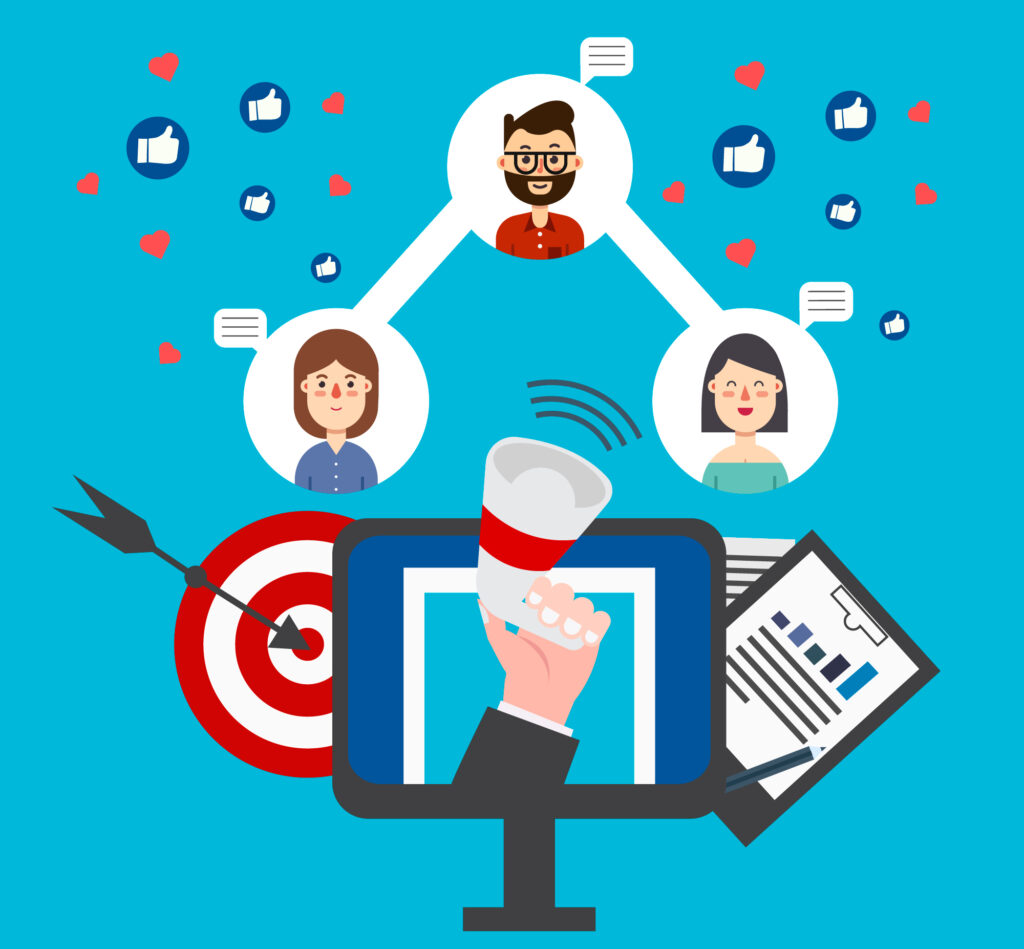Imagine pouring your heart, time, and money into a product or service—only to realize no one’s buying. It’s frustrating, right? You’ve built something amazing, but it feels like you’re shouting into the void. The truth is, the problem isn’t always the product. More often than not, it’s who you’re trying to reach.
This is where understanding your target audience and ideal customer becomes a game-changer. Whether you’re launching a startup, growing a side hustle, or running a well-established business, knowing exactly who you’re speaking to can mean the difference between thriving and struggling. It’s not just about selling more—it’s about connecting better, communicating clearer, and building a brand people actually care about.
In this article, we’ll walk through the practical steps to uncover who your ideal customers really are. You’ll learn how to gather insights, analyze behaviors, and create customer profiles that feel real—not just guesses on paper. We’ll cover real-life examples, simple tools you can use today, and strategies that turn vague ideas into actionable plans. By the end, you’ll have a clear roadmap to reach the people who need what you offer—before you even launch your next campaign.
Let’s dive in and start building a business that doesn’t just exist, but resonates.
Why Knowing Your Audience Isn’t Optional—It’s Essential
You wouldn’t go on a road trip without a map, would you? Yet, so many businesses launch without a clear idea of who they’re trying to reach. That’s like driving blindfolded.
The reality is simple: you can’t be everything to everyone. The more precisely you define your audience, the more effectively you can serve them. Think about it—when you speak directly to someone’s needs, pain points, and desires, your message cuts through the noise.
Take two coffee shops on the same street. One says, “We sell great coffee.” The other says, “For remote workers who need a quiet space, fast Wi-Fi, and a double espresso to power through their day.” Which one feels more relevant to you—if you’re working from your laptop?
That’s the power of audience clarity.
According to a study by HubSpot, businesses that define their ideal customer profiles see up to 73% higher conversion rates. And companies using audience segmentation report 30% more revenue growth than those who don’t. These aren’t just numbers—they’re proof that targeting works.
But it’s not just about sales. When you know your audience, you build trust. You create content that educates, products that solve real problems, and experiences that feel personal. That’s how brands like Apple, Glossier, and Patagonia build loyal followings.
So, the first step isn’t creating a better product—it’s asking: Who is this really for?
Answer that, and everything else gets easier.
Step 1: Start with What You Already Know
Before you go digging for data, take a moment to reflect on what you already know about your customers.
If you’ve already launched, ask yourself:
- Who’s buying from me right now?
- What do they have in common?
- Where did they hear about me?
- What problems do they say my product solves?
Even if you’re just starting out, think about the people you imagine using your product. Are they busy parents? Young professionals? Fitness enthusiasts?
Write down everything that comes to mind—no filter. This is your initial customer hypothesis.
For example, let’s say you’re launching a meal prep delivery service. Your first guess might be: “Busy professionals in cities who don’t have time to cook.” That’s a solid starting point.
Now, dig deeper.
- Are they mostly men or women?
- What age range?
- Do they live alone or with family?
- What do they value—convenience, health, taste, affordability?
These questions help you move from a broad group (“busy professionals”) to a sharper picture.
Don’t worry if your assumptions are wrong. That’s why we’re doing this—to test and refine them.
Pro tip: Talk to real people. If you have existing customers, send a quick survey. Ask open-ended questions like:
- “What made you decide to try our product?”
- “What challenge were you trying to solve?”
- “How has this helped you?”
Their answers will reveal patterns you might never have guessed.
One founder of a skincare brand thought her audience was women in their 30s. But after talking to customers, she realized most were actually in their 50s, dealing with hormonal changes. That insight changed her entire marketing strategy—and doubled her sales in six months.
So start with what you know. Then, be ready to update it.
Step 2: Use Data to Build Your Customer Profile
Now that you’ve gathered initial insights, it’s time to get specific. A customer profile (or buyer persona) is a semi-fictional representation of your ideal customer based on real data and educated guesses.
Think of it like creating a character for a story—but this one’s real.
A strong profile includes:
- Demographics: Age, gender, location, income, education, job title
- Psychographics: Interests, values, lifestyle, personality traits
- Behavioral data: How they shop, what brands they like, how often they buy
- Pain points: What keeps them up at night? What problems do they need solved?
- Goals: What are they trying to achieve?
Let’s build one together.
Meet Sarah, 34, a marketing manager in Austin, Texas. She earns $85,000 a year, lives with her partner, and has no kids (yet). She’s health-conscious, shops organic when she can, and spends 10 hours a week on fitness.
But here’s the catch: she’s overwhelmed. Between work, workouts, and meal planning, she’s always tired. She wants to eat well but doesn’t have time to cook.
She’s your ideal customer for that meal prep service.
Now, instead of marketing to “busy professionals,” you’re speaking directly to Sarah. That changes everything—from your messaging (“No more guessing what’s for dinner”) to your visuals (clean, modern, fast) to your delivery times (evening drop-offs after work).
Where do you get this data?
- Google Analytics: See age, gender, location, and interests of website visitors
- Social media insights: Platforms like Instagram and Facebook show who engages with your content
- Customer surveys: Tools like Typeform or Google Forms make it easy to collect feedback
- Sales records: Look for patterns in who buys, how often, and what they buy
The more data you gather, the more accurate your profile becomes.
And remember: you can have more than one ideal customer. Maybe you also serve retirees looking for heart-healthy meals. That’s fine—just create a separate profile for them.
Step 3: Go Beyond Demographics—Understand Their Mindset
Demographics tell you who your customer is. But psychographics tell you why they buy.
Two people can be the same age, income, and location—but make completely different choices based on their beliefs, fears, and motivations.
For example:
- One person buys eco-friendly products because they care about the planet.
- Another buys them because they want to be seen as responsible by their peers.
Same action. Different reasons.
To truly connect, you need to understand the emotional drivers behind behavior.
Ask yourself:
- What does success look like for them?
- What are they afraid of?
- What do they wish they had more of—time, confidence, energy, peace of mind?
Let’s go back to Sarah. Yes, she’s busy. But deeper down, she’s worried about her health. She’s noticed she’s gaining weight, feels sluggish, and doesn’t want to end up on medication. She wants to feel in control—of her body, her time, her life.
Your messaging shifts from “We deliver meals” to “Reclaim your energy. Eat well without the stress.”
That’s the difference between a transaction and a connection.
One powerful way to uncover these insights is through customer interviews. Pick 5–10 of your best customers and ask them to share their story.
Sample questions:
- “Walk me through your typical day.”
- “What’s the hardest part about [problem you solve]?”
- “What would your life look like if this problem disappeared?”
Listen more than you talk. Take notes. Look for recurring themes.
You’ll start to hear phrases they use—words you can borrow for your marketing. Maybe Sarah says, “I just want to feel like me again.” That’s gold. Use it.
When you speak their language, they feel seen. And when people feel seen, they buy.
Step 4: Analyze Your Competition to Find Gaps
You’re not the only one trying to reach your audience. So, who else is out there—and what can you learn from them?
Competitor analysis isn’t about copying. It’s about finding the gap—the unmet need, the underserved group, the message that’s missing.
Start by listing 3–5 competitors in your space. Visit their websites, social media, and customer reviews. Ask:
- Who are they targeting?
- What promises do they make?
- What tone do they use—funny, serious, luxurious, practical?
- What are customers complaining about in the reviews?
For example, if you’re selling yoga mats, you might notice that most brands focus on durability or eco-materials. But reading reviews, you see people saying, “I wish it didn’t slip on hardwood floors.”
Ah—there’s your opportunity.
Now, you can position your mat as “The only yoga mat that stays put—on any surface.”
Or, maybe your competitors are all targeting young, flexible yogis. But what about older adults or people with joint pain? That’s a segment they’re ignoring.
You could create a line of thicker, cushioned mats with easy-grip edges—and market them to people over 50 who want to stay active.
Another tactic: look at who’s engaging with their content. If a competitor’s Instagram posts get tons of comments from women in their 40s, even if they claim to target millennials, that’s a clue.
Tools like SparkToro or Audience Insights can show you what websites, social accounts, and keywords your audience follows—giving you a behind-the-scenes look at their world.
The goal isn’t to beat your competitors at their own game. It’s to play a different game—one where you’re the obvious choice for a specific group of people.
Step 5: Test and Refine Your Audience Over Time
Here’s a truth many entrepreneurs miss: your ideal customer can change.
Maybe you started selling fitness trackers to gym enthusiasts. But after launch, you notice a surprising trend—your best customers are actually physical therapists using your device to monitor patients.
Do you ignore that? Or do you pivot?
The smart move is to adapt.
Your first customer profile is a hypothesis, not a final answer. You need to test, measure, and refine.
Start by running small experiments:
- Launch two different Facebook ads—one targeting busy moms, another targeting college students. See which gets more clicks and conversions.
- Offer two versions of your product (e.g., a premium and budget option) and track who buys what.
- Send different email subject lines to segments of your list and compare open rates.
Use the data to double down on what works.
Also, keep an eye on churn rate—how many customers stop using your product. If a certain group drops off quickly, ask why. Maybe your product doesn’t actually solve their problem.
One SaaS company thought their ideal user was small business owners. But after analyzing usage data, they found that solopreneurs were the ones using the tool daily. So they shifted messaging, pricing, and support to better serve that group—and saw a 40% increase in retention.
Set a rhythm: review your audience data every 3–6 months. Update your profiles. Adjust your strategy.
Because markets evolve. Trends shift. New technologies emerge. Your business should too.
Step 6: Create Content and Offers That Speak Directly to Your Ideal Customer
Now that you know who they are, it’s time to speak their language.
Generic content gets ignored. Personalized, relevant content gets shared, saved, and acted on.
Start by aligning your messaging with your customer’s journey:
- Awareness stage: They know they have a problem but don’t know the solution.
→ Content: Blog posts, social media tips, educational videos
Example: “5 Signs You’re Not Getting Enough Nutrients (Even If You Eat Healthy)” - Consideration stage: They’re comparing options.
→ Content: Comparison guides, case studies, webinars
Example: “Meal Prep Services Compared: Which One Saves You the Most Time?” - Decision stage: They’re ready to buy.
→ Content: Free trials, demos, testimonials, limited-time offers
Example: “Try 3 Days of Healthy Meals—Delivered to Your Door. Free.”
Every piece of content should answer the silent question in their mind: “What’s in it for me?”
Use the voice and tone your audience responds to. If they’re professionals, keep it clear and confident. If they’re creatives, add warmth and inspiration.
And don’t forget visuals. A busy mom scrolling on her phone wants quick, scannable content with relatable images—like a real person in a messy kitchen, not a perfect stock photo.
One brand selling productivity tools noticed their audience loved short TikTok videos showing “a day in the life” of a remote worker. So they shifted focus from long blog posts to 60-second clips—and tripled their engagement.
When your content feels like it was made for them, they’ll feel like you get them. And that’s how loyalty begins.
Step 7: Build a Feedback Loop to Stay Connected
Your relationship with your audience shouldn’t end at the sale.
The most successful brands treat customer feedback as a superpower.
Create a feedback loop—a system where you continuously collect, analyze, and act on what your customers tell you.
Simple ways to do this:
- Add a one-question survey after purchase: “How likely are you to recommend us?”
- Monitor reviews on Google, Yelp, or Amazon
- Watch comments on social media
- Host quarterly “voice of customer” calls with loyal users
Then, close the loop by showing you listened.
For example:
“You told us packaging was confusing—so we redesigned it. Here’s how.”
That kind of message builds trust and turns customers into advocates.
Netflix uses viewing data to decide which shows to renew. Amazon uses purchase history to recommend products. You don’t need AI to do this—just curiosity and consistency.
Set up a simple spreadsheet to track:
- Common complaints
- Feature requests
- Compliments
- Suggestions
Review it monthly. Look for patterns. Then act.
One coffee brand noticed customers kept asking for smaller bags. They assumed everyone wanted bulk. But data showed many lived alone and didn’t want beans going stale. So they launched single-serve packs—and sales jumped 25%.
When you let your customers guide you, you stop guessing and start growing.
Final Thoughts: Your Audience Is Your Compass
At the end of the day, your business exists to serve people. Not vague market segments. Not imaginary demographics. Real human beings with real needs, dreams, and frustrations.
Identifying your target audience isn’t a one-time task. It’s an ongoing conversation. It’s about curiosity, empathy, and the willingness to adapt.
When you know who you’re talking to, everything gets clearer:
- Your marketing becomes more effective.
- Your product development becomes more focused.
- Your customer service becomes more personal.
- And your impact becomes more meaningful.
You don’t need millions of customers. You need the right ones.
So start small. Talk to three people who’ve bought from you. Ask what they love, what’s missing, and what they’d change. Write down what you learn. Then do it again next month.
Over time, you’ll build a business that doesn’t just survive—but thrives—because it’s built on real human connection.
And that’s something no algorithm can fake.
Ready to Find Your Ideal Customer?
Now it’s your turn. Grab a notebook or open a blank doc and answer this:
“If I could help one person with my product or service, who would it be—and why?”
Write it down. Be specific. Give them a name, a story, a struggle.
Then, test it. Talk to real people. Refine it.
Because the more clearly you see your customer, the more clearly they’ll see you.
Have questions? Found your ideal customer in an unexpected way? Share your story in the comments below—let’s learn from each other.
And if you found this helpful, share it with someone who’s still trying to figure out who they’re really serving.
Your audience is out there. Go find them.

Danilo Ferreira is a passionate entrepreneur, travel, and financial freedom enthusiast, always seeking new ways to expand his horizons and live with purpose. Driven by a high-performance mindset, he combines discipline and curiosity to achieve ambitious goals, exploring the world while building projects that reflect his vision of independence and continuous growth.







